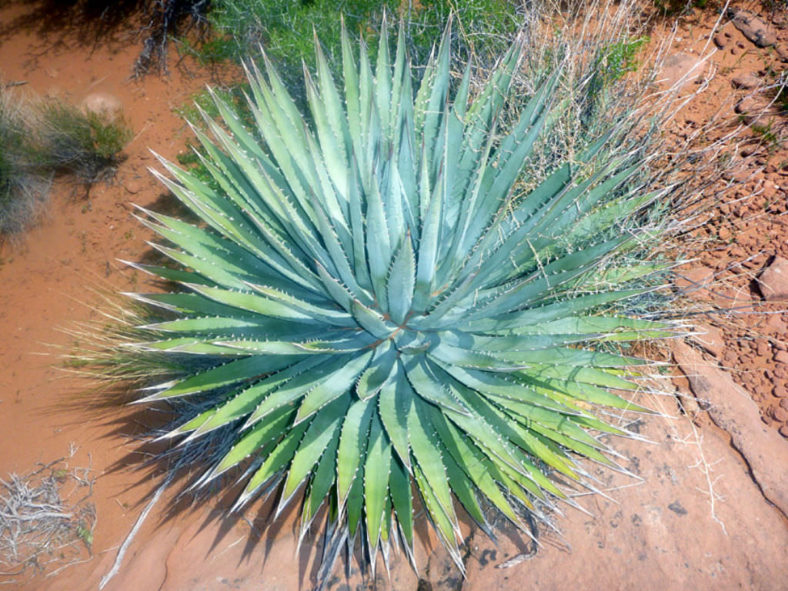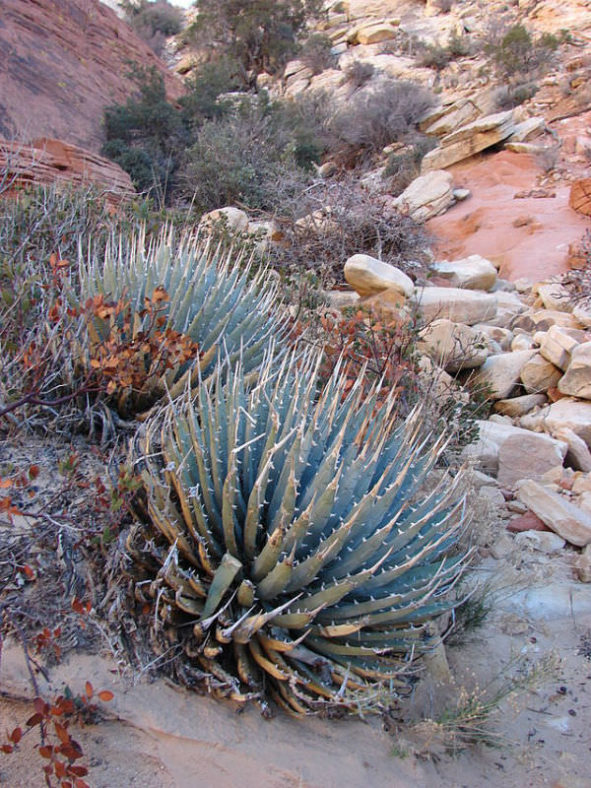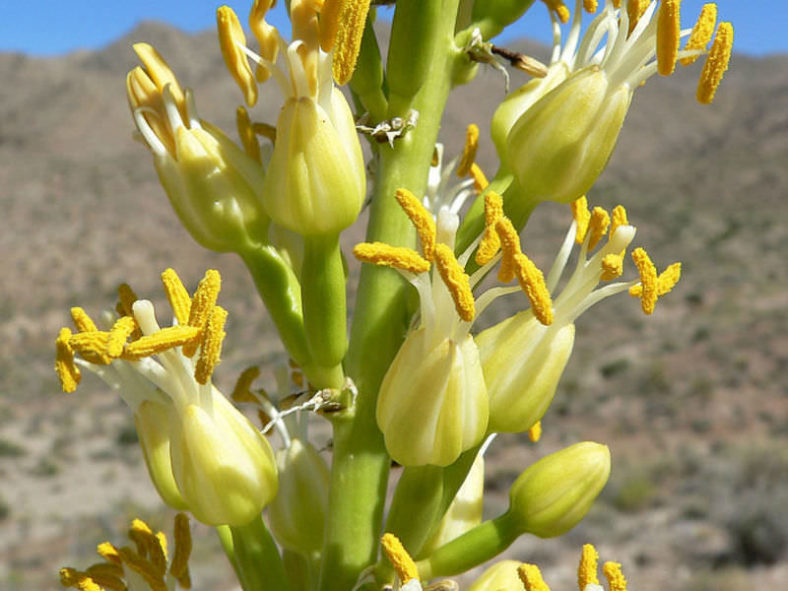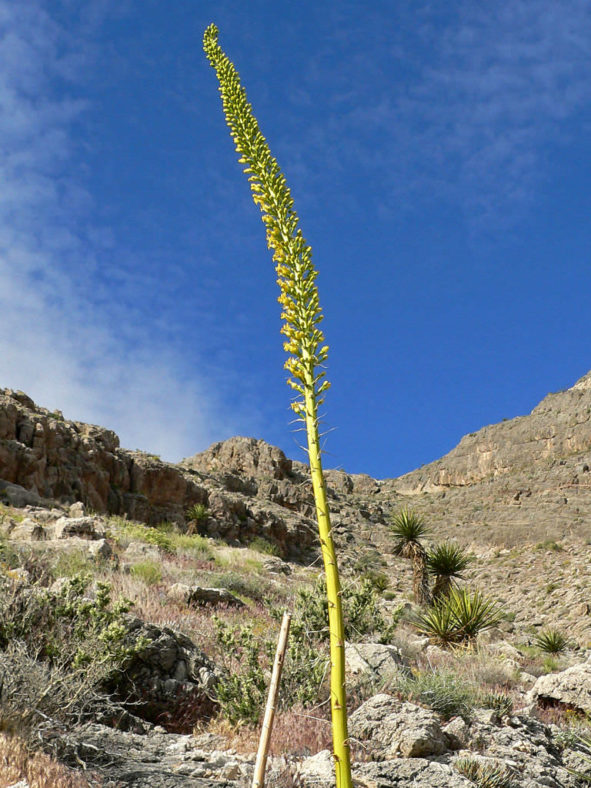Scientific Name
Agave utahensis Engelm.
Common Name(s)
Utah Agave, Yant
Synonym(s)
Agave haynaldii var. utahensis, Agave utahensis var. utahensis
Scientific Classification
Family: Asparagaceae
Subfamily: Agavoideae
Genus: Agave
Etymology
The specific epithet "utahensis" (pronounced "yoo-tah-EN-sis") refers to the type locality of this species, where this species was first discovered by Palmer in 1870 in the vicinity of St. George in Utah.
Origin
Agave utahensis is native to the United States (Utah, Nevada, Arizona, and California).
Description
Agave utahensis is a succulent plant that forms compact rosettes of stiff, blue-green leaves with spiny margins and a long, light gray to ivory-white terminal spine. The rosettes can grow up to 2 feet (60 cm) tall and up to 3.3 feet (1 m) in diameter, either solitary or offset sparingly from the base. The leaves are lance-shaped and can measure up to 20 inches (50 cm) in length and 2.2 inches (5.5 cm) in width.
The flowers are yellow, urn-shaped, and appear in clusters on a stalk that can grow up to 12 feet (4 m) tall. The fruits are capsules that can reach a length of 1.2 inches (3 cm) and contain black seeds.
Varieties

Hardiness
USDA hardiness zones 6a to 10b: from -10°F (-23.3°C) to 40°F (4.4°C).
How to Grow and Care
Agaves are not difficult plants to grow. They're slow-growing and dramatic and will even thrive on a bit of neglect. If you're the type of person who likes to fuss with houseplants and water a lot, Agave is probably not the plant for you. On the other hand, if you're the type of person who likes to set it and forget it, and you have a sunny window, Agave might be the way to go. Be aware that some large varieties will eventually outgrow your room (unless you have a large greenhouse), and Agave can be aggressive. They have irritating sap and sometimes very sharp thorns that can injure small children and even pets.
Generally, Agaves do not require repotting every year. Most species commonly found in cultivation grow very slowly and take a long time to outgrow their pot. It's also best to handle your Agave as little as possible since they do not like to be disturbed.
See more at How to Grow and Care for Agave.
Links
- Back to genus Agave
- Succupedia: Browse succulents by Scientific Name, Common Name, Genus, Family, USDA Hardiness Zone, Origin, or cacti by Genus
Photo Gallery
Click on a photo to see a larger version.


